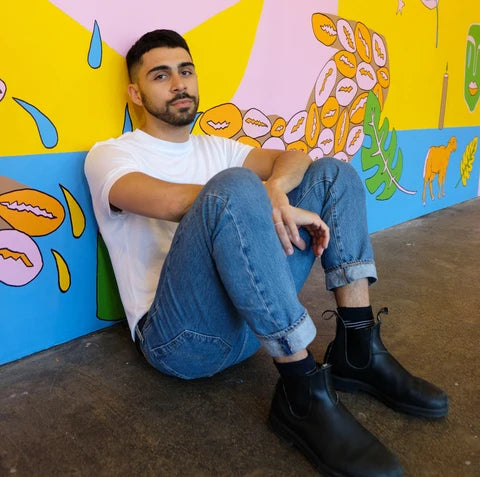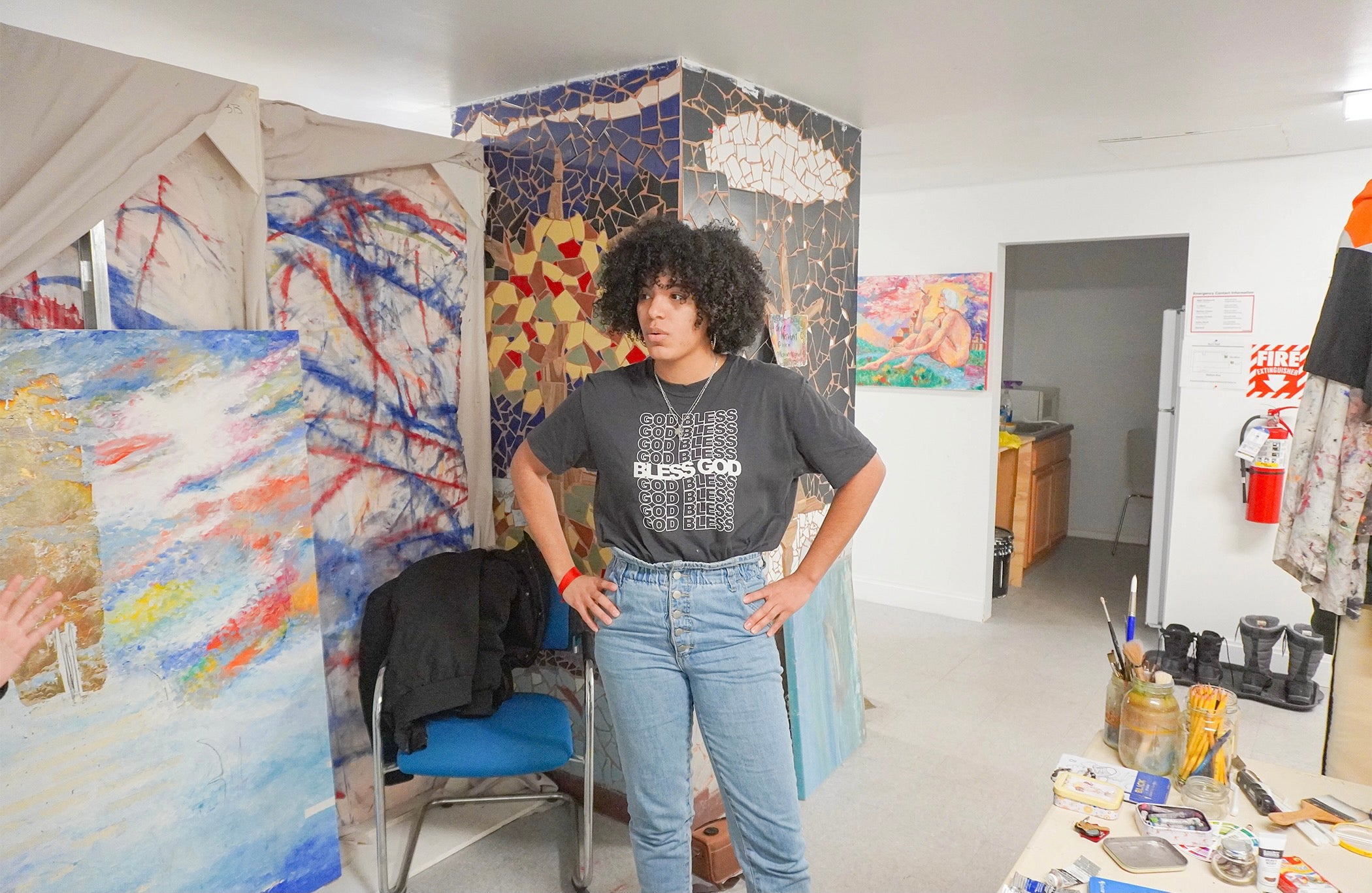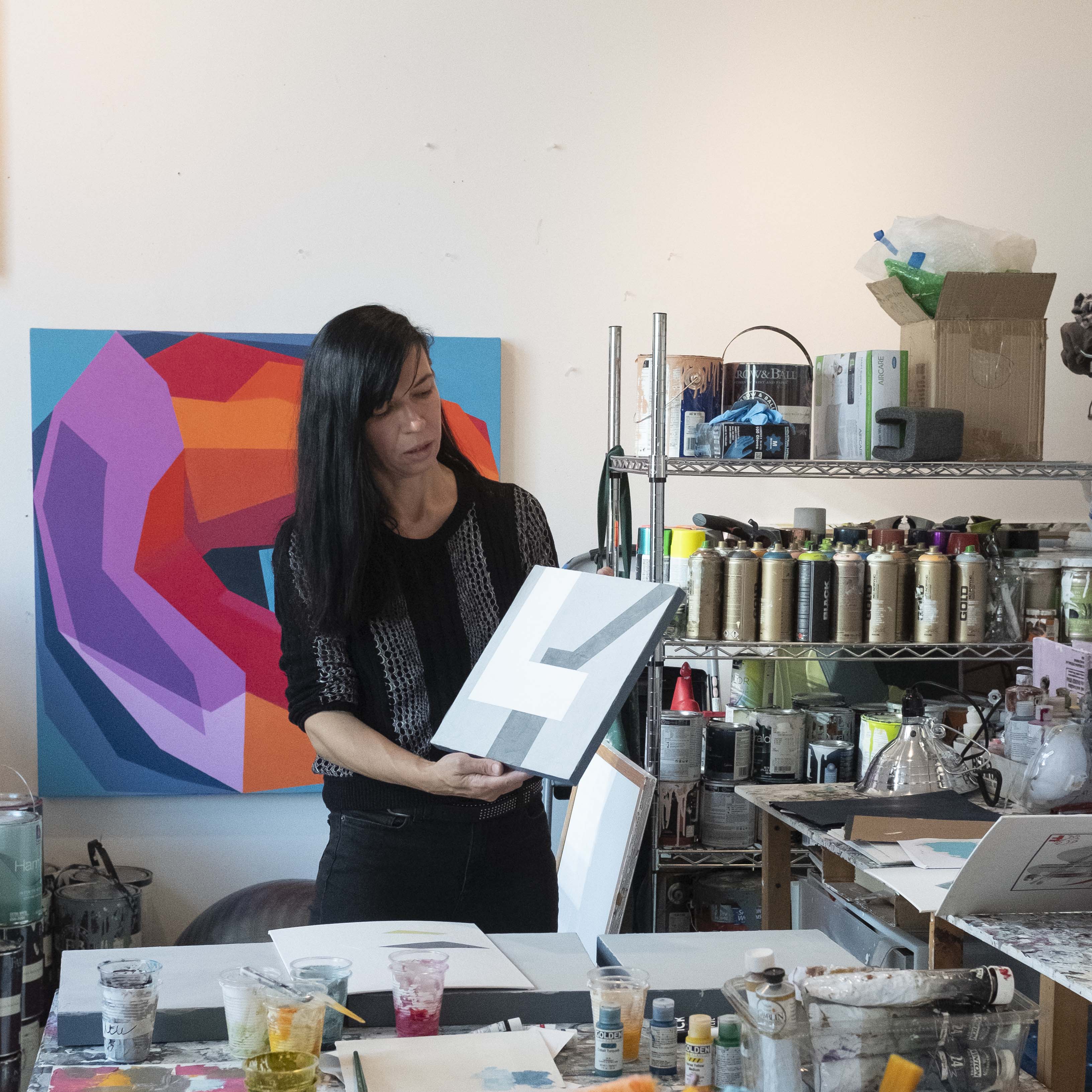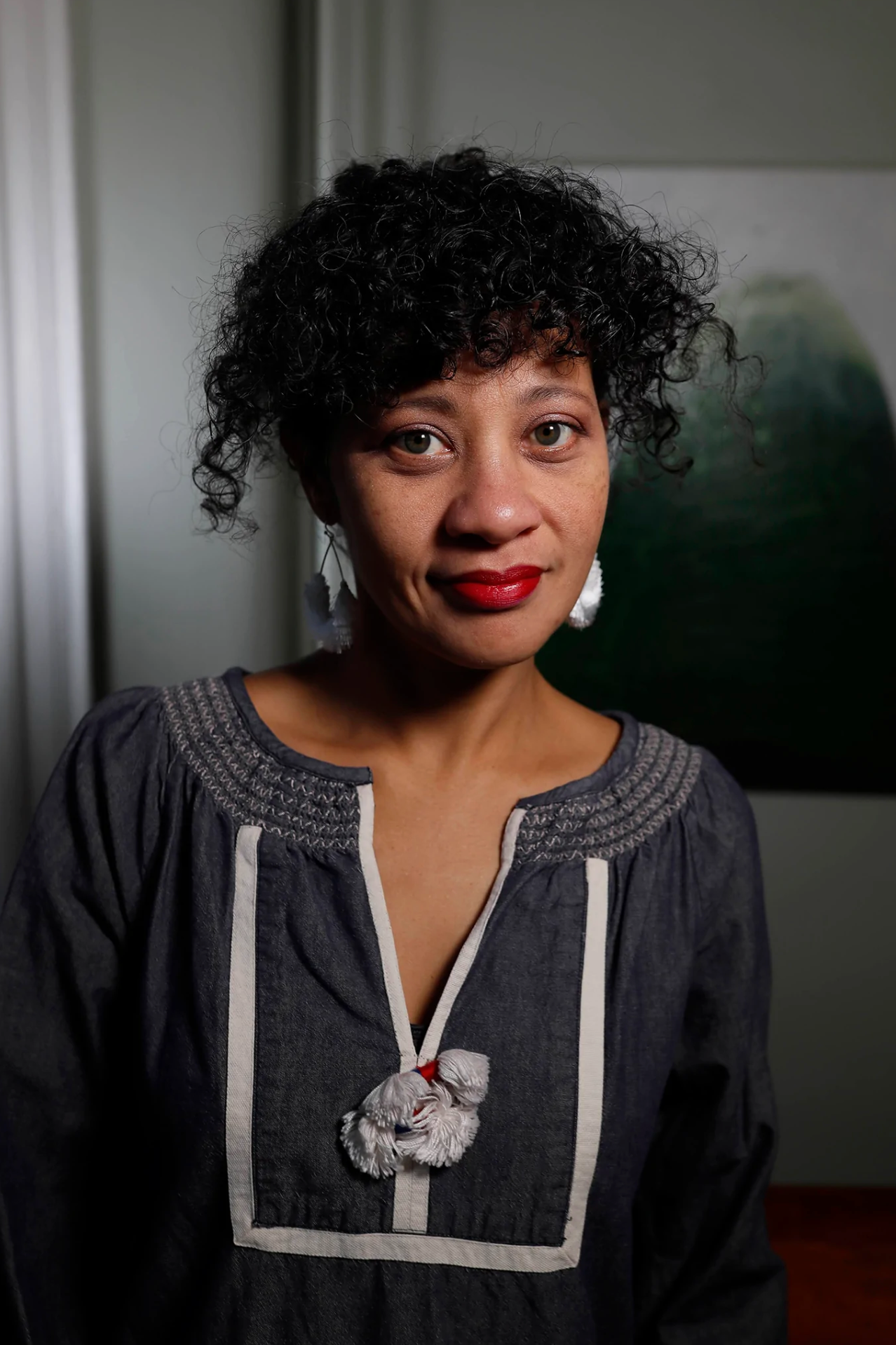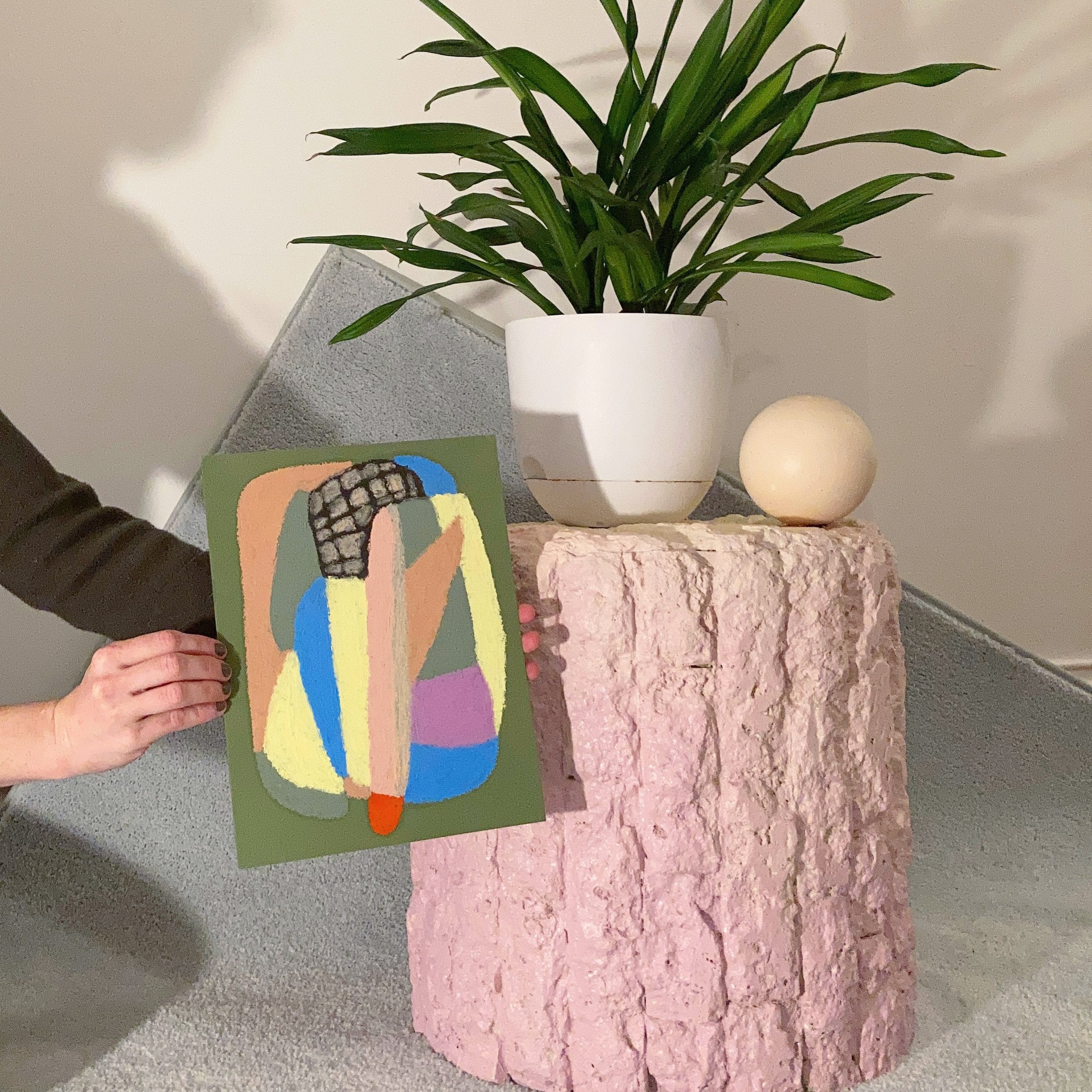No Products in the Cart
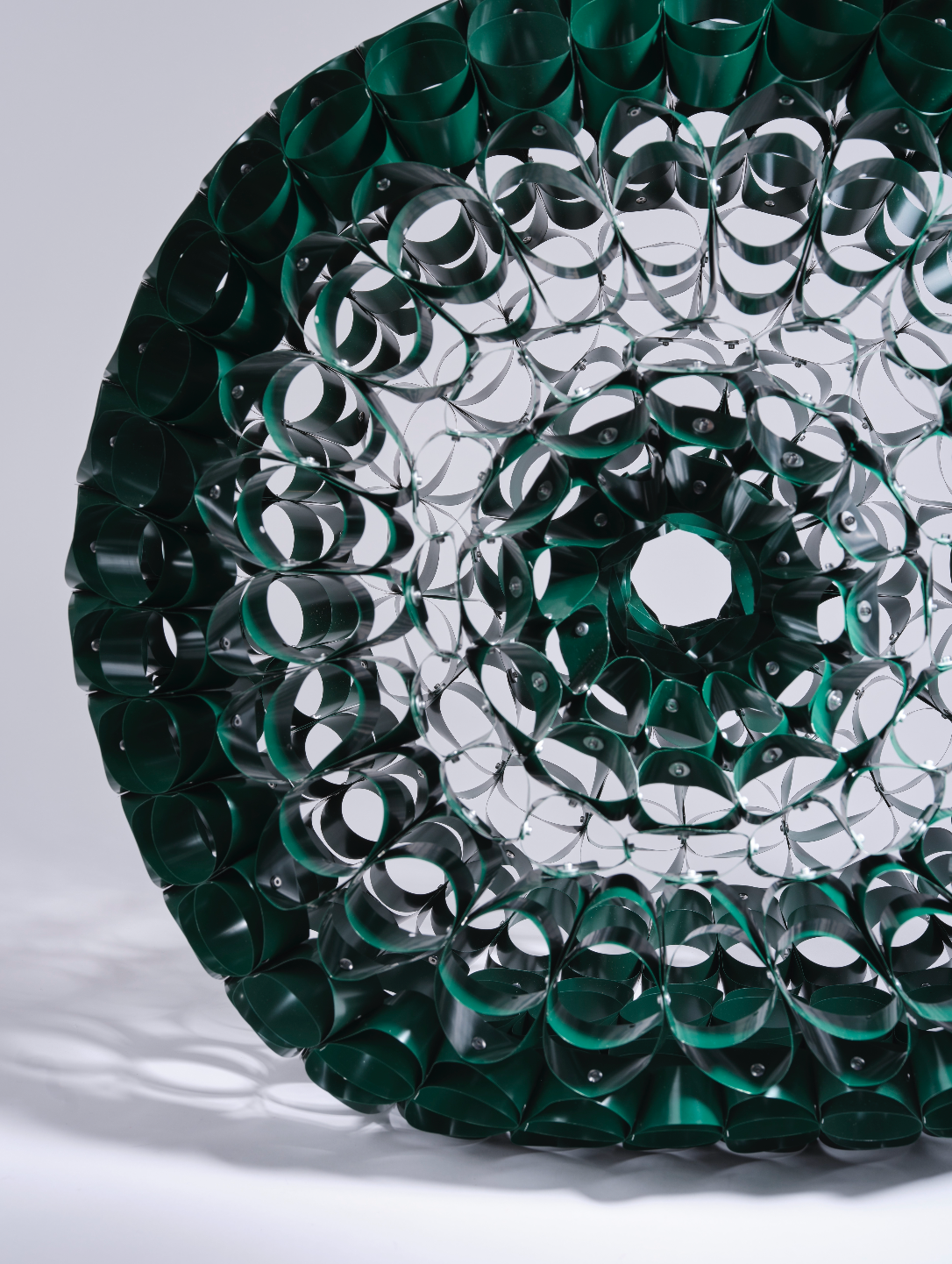
To celebrate Earth Day, we sat down with Curina artist Kate Rusek to discuss sustainability and how it shows up in their artistic practice!
_________________________________________
There are so many forms of sustainable art - how you would define sustainability and how does it show up in your practice?
Sustainability is a pretty broad term, with subtle nuances in many areas of life and culture. I have an educational background in Sustainable Design as well as my fine art training. There are established tenets in that realm related to environmental, social, and economic concerns that hold equal weight when qualifying as a sustainable practice. It is important to state that adopting these practices are almost always a choice. Capitalism has ground down organic methods to approach the design of objects, tasks, ways of being, and systems with environmental harmony, human dignity, and economic support for all firmly in place. Any efforts to challenge that status quo are worthwhile efforts.
In my practice I embrace as many facets of the idea as possible. My work for the last decade has been to embrace and examine sustainability through a material lens. In that sense, I am deeply ingrained in the upcycling, reuse, reclamation, discards studies realm of sustainable art. The materials I use are bi-products (of life, of industry, of my own processes) but my methods of assemblage, installation, and conceptual inquiry interrogate the narrative and history of my materials and forms I create.
How do you find the materials you want to work with?
In the practical sense, I have my hands in a lot of different streams of making. I balance my creative identity as fine artist working in sculpture and installation with garment and costume building for the entertainment industry. Bouncing in and out of different workrooms and friends' studios lets me understand their processes and what I might be able to glean from their waste streams. I have developed a reputation in my community as a reuse queen. My friends are frequently saving things for me that they suspect I might be interested in. Most of the time, their instincts are correct. Also, there is waste seeping from so many corners of life in New York City, All. The. Time. Walking down the street in most neighborhoods yields surprising and often delightful finds. I don't wish for waste proliferation but until it dramatically improves, I can and will take creative advantage. There are also incredible reclamation organizations in this city. Build it Green in Gowanus, Remix market in LIC, Materials for the Arts, thrift stores in every neighborhood. Those are go-tos in life and art, always looking to reuse before buying new. Look for ‘it’ whatever ‘it’ is and you will find.

Are there any other materials that you’re hoping to work with or incorporate into your practice in the future?
Oh man, so many! I think of my practice as materially opportunistic. I am an equal opportunity curious when it comes to materials. My practice is unified by approach and process, conceptual considerations, rather than a tightly dictated aesthetic. I certainly gravitate towards texture and repetition, which often means I am free form ‘weaving’ , fastening, assembling, to find some sort of order that takes advantage of physical properties. Because I am exploring waste and wasting not only physically but conceptually, I am open to all kinds of materials, really anything that intuitively makes me curious. I am always drawn to things that seem absurdly useless and this designation has so much to do with context. Matter out of place as Annie Leonard (ecoactivist and personal hero) coined in her seminal ‘Story of Stuff’, is a really precarious designation. In one context 10,000 plastic spools are useful, say in a garment factory, where they serve as a critical cog to facilitate the sewing of all kinds of things. Or even in a thread production factory, where they are facilitating the transport of the thread to be used by makers. However, if the production processes change, machinery upgrades, for example, those objects potentially become a mountain of useless stuff in an instant, detached from use, and lost in a limbo of obsolescence. We don't have smooth established mechanisms to catch this proverbial ‘pocket lint’ in a broad sense. It often falls on designers to come up with novel approaches to pick up this slack, which makes everyone feel good for a moment but, big picture, this activity exposes the underbelly of our modern conveniences. But I digress…
I am most excited by materials I can catch from other making processes. I am particularly interested in high strength, environmentally persistent plastics, at the moment. Things that will outlast generations of human beings. It's fascinating (and horrifying) to imagine the longevity of something like acrylic or vinyl or styrene. Nefarious in their threat to human health (from a toxicity standpoint) but in a geological time scale, a triumph. These materials will persist for hundreds of years, and break down into the environment for hundreds more. And because we invented this stuff it's geologically very new. There are incredible talents researching in this space but the studies and the data are young and we only know what we study, making the knowledge base relatively small at this point. For me, it calls into question how we value this stuff and what we consider precious and worthy of our attention and care.

How has your practice evolved?
I have found a lot more mental ease and abundance in my modes of working in the last few years. At times, I have been very restrictive, self parameter heavy, in my zero-waste approach in my studio. My thoughts are evolving into a more freeing, generative way by taking a longer view of my practice. I give myself more permission to experiment, even if that means some kind of failure, knowing that I dont have my life’s work preconceived. If I fail in a project or process, I know that those materials, and particularly that experience will build into knowledge and something fruitful in the future. This comes with a healthy trust of the unknown, which has felt scary in years past, but exactly right in my current moment.
Who are some artists you’re excited about that are creating sustainable artwork?
So many! Artists, creatives, and makers are my favorite people and my life’s energy when I feel a little depleted. I could speak about so many artist I admire, but a few that jump out:
I love the work of Cathy della Lucia. She is such a powerhouse. Based in Boston, she makes the most incredible sculpture in wood, porcelain, and other other delightful materials. I definitely think of her work in the sustainable lens as she creates these incredible small forms from wood scraps then assembles them intuitively into larger massive shapes. There is so much care in her work. The time and labor, sanding for hours is just mind blowing. Her works are meticulously put together like an intricate puzzle. She has a brilliant mind for complexity and richness. Her tenacity and commitment to her work is so inspiring.
Juan Manuel Pinzon is another incredible artist who really leans into the vibrancy of materials with a past history. He works with all kinds of objects but my favorite pieces are his assemblages of detritus that wash up on beaches of the North Atlantic. He has an incredible sensitivity to form and texture and the lightest touch to assemble objects in ways that transform them into sumptuous highly charged objects. There is something so seductive about the way he combines materials.
One last one, even though I could go on and on and on, is Tau Lewis. Her work is just skyrocketing right now. I love her figurative work, I think particularly because it is so unlike my own, yet I feel such a kinship with the craft of it, her attention to detail. She makes these shamenic figures out of intimate materials, textiles mostly, pre owned furs, leathers, silks. Her figures hold memory, assembled from once prized possessions, objects that would have been so special to an individual. That preciousness to a person, the life of an individual who once formed a relationship with that garment resonates in her artworks. The assembly of that energetic power from materials is palpable when I encounter her work.




